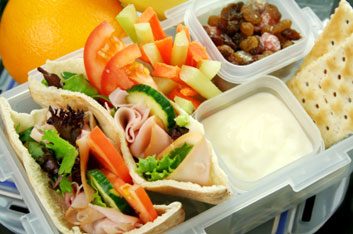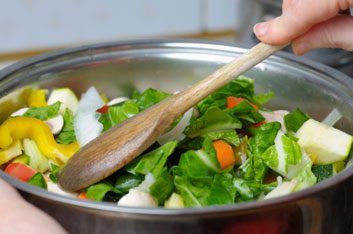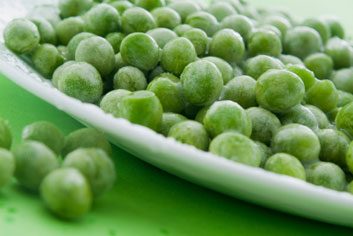
Eating well doesn’t have to be expensive
Is it costly to eat healthy? A new study out of the University of Navarra in Spain found that the more people stick to a healthy diet, the more money they spend on food. That’s bad news for people who want to eat well but need to be frugal. However, choosing healthier foods doesn’t have to mean breaking the bank. Here are seven ways to eat well without spending big.

1. Cut out dining out
One take-out lunch at work can cost more than several healthy lunches prepared at home. “The biggest thing I hear from women is, ‘It’s easier for me to go out and eat,'” says registered dietitian Brenda Arychuk in Edmonton. “But it actually takes less time to prepare lunch than go out and stand in line to buy lunch.” Homemade lunches are typically lower in fat, salt and sugar than a take-out lunch.
Click through for 20 healthy lunch ideas.

2. Make the freezer your friend
It’s cheapest to buy meats in large portions, like whole chickens or an entire salmon, and then cut them into pieces yourself for the freezer. Add your own seasonings to the packages, and they’ll be all ready to cook. Likewise, when you make soups and stews, try doubling or tripling the recipe and freezing the leftovers. You’ll have a considerably cheaper alternative to buying fast frozen dinners. Just be sure to use up your freezer foods within a couple of months.

3. Fill your glass without emptying your wallet
Consider how much of your budget gets spent on empty-calorie and high-sugar drinks like pop and juice. “We have a lot of money going towards those things that don’t matter very much in our diet,” Arychuk points out. Even healthy-sounding fruit juices are often loaded with added sugar and calories. Try to focus on drinking more water and low-fat milk. Similarly, says Arychuk, pay attention to what you’re spending on junk food. “If you look at the cost of a big bag of chips and a bottle of pop, you could get a decent meal with that.”

4. Eat more fruits and veggies for less
Frozen fruits and vegetables are usually less expensive than buying fresh, and are often just as nutritious – sometimes even more so. A vegetable that’s been frozen soon after harvesting will likely have more nutrients than something fresh-picked that gets shipped from another country and then hangs out in your fridge for a couple of weeks more. If you want fresh produce, it’s most economical to buy locally when it’s in season.

5. Watch how you shop
Your best bets in the grocery store are often around the perimeter, where the basic foods are sold: the produce section, the bakery, and the meat and cheese departments. “Everything in between tends to be more packaged, convenience-type foods,” says Arychuk, “and as soon as we get into the instant stuff, the cost goes up and the nutrition generally goes down.” Stick to a grocery list and try not to shop when you’re hungry. This way you won’t be tempted by impulse buys, which are often expensive and not-so wholesome.
Also, take some time to clip coupons before you head to the store-it may seem like something your Grandma does, but special offers can save you big-time on your food budget.

6. Bulk up
Do you find yourself spending a lot on single-serve portions of healthy choices like yogurt or canned fruit? Buy the same amount of food in a larger size then prepare your own individual servings in small reusable containers. Staples such as brown rice and legumes are also cheaper when bought in bulk. If your storage pantry just can’t handle that much mass, ask a neighbour to share with you.

7. Eat less meat
Not every dish has to have meat, which is often the priciest part of the meal. Use protein alternatives like beans, lentils, tofu or cheese. Consult Canada’s Food Guide for high-protein ideas. You can also simply reduce the amount of meat you’re using, whether served straight up or cooked in a recipe like chili or spaghetti sauce.
Related:
• 10 ways to stay healthy on the cheap
• 10 cheap fitness tools and how to use them
• 8 budget superfoods, plus recipes to try
